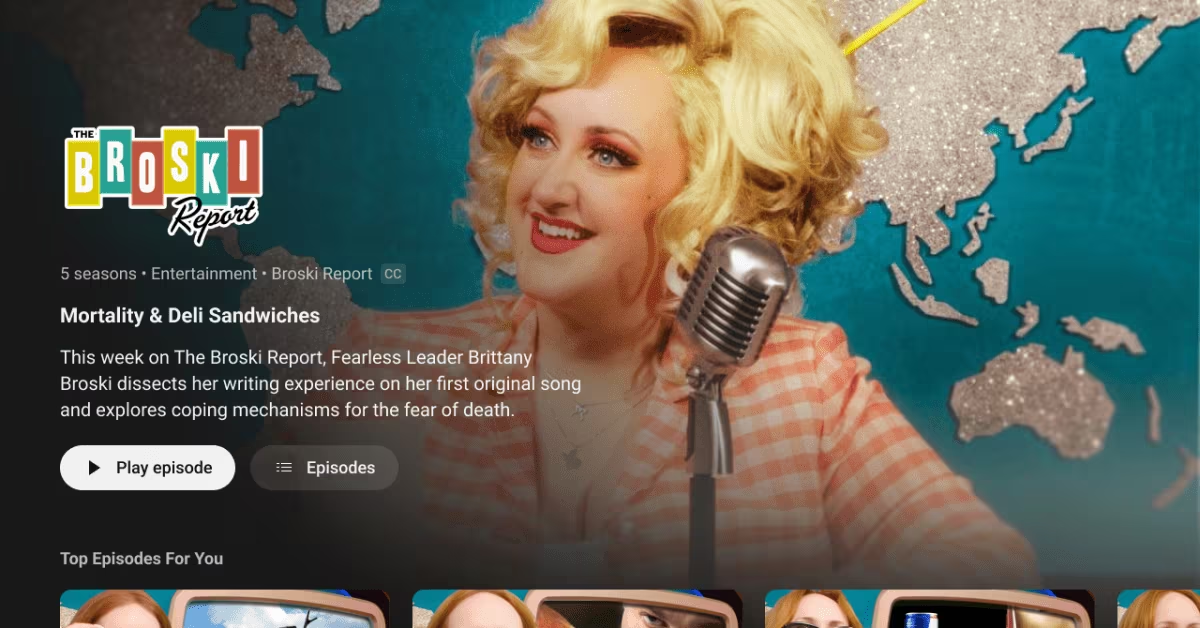YouTube’s Strategic Pivot: Transforming the TV App for a Premium Viewing Experience
YouTube is fundamentally transforming the user experience on smart televisions and streaming devices, adopting a sleek, Netflix-style interface designed to encourage “lean-back” viewing. This significant redesign marks a major strategic pivot for the platform, aiming to solidify its position not just as a repository for short clips and creator content, but as a primary destination for long-form entertainment and traditional television consumption in the living room.
For years, the YouTube TV interface was often criticized for feeling like an enlarged version of the mobile app—clunky, difficult to navigate with a remote, and optimized for searching rather than passive discovery. The new experience, which has been rolling out since late last year and is now widely available in 2025, signals YouTube’s intent to blur the lines between user-generated content (UGC) and premium streaming services like Netflix, Hulu, and Disney+.

Redefining the ‘Lean-Back’ Experience: Interface Changes
The core of the transformation lies in the user interface (UI) and user experience (UX), which now prioritize content discovery and passive viewing over active searching. The changes are immediately apparent to users accustomed to traditional streaming platforms.
Key Interface Enhancements
The new design focuses on large, cinematic visuals and simplified navigation, making the experience seamless for users operating with a remote control:
- Cinematic Previews: Videos now feature much larger thumbnails and often begin playing a high-quality, muted preview immediately upon selection or hover. This mimics the behavior of services like Netflix, giving viewers an instant taste of the content without requiring a click.
- Improved Content Organization: The home screen features better-organized shelves and categories, moving away from the overwhelming feed structure of the past. Content is curated more aggressively based on viewing habits, pushing relevant long-form videos and live streams to the forefront.
- Simplified Navigation: The sidebar and menu structures have been streamlined. Navigation is now primarily horizontal (scrolling through content shelves) and vertical (scrolling through categories), which is the standard convention for TV-based streaming.
- Enhanced Discovery: The algorithm is being tuned specifically for the TV environment, favoring longer videos, higher production value content, and content suitable for family or group viewing, rather than the quick, viral clips that dominate mobile feeds.
This shift is crucial because the way people interact with content on a 65-inch screen from a couch is fundamentally different from how they interact with a phone screen on a commute. The TV experience demands a passive, intuitive flow.
The Strategic Imperative: Capturing TV Time and Ad Revenue
YouTube’s aggressive focus on the TV app is driven by powerful business metrics. The living room is now the fastest-growing segment of YouTube consumption, and it represents the most lucrative opportunity for advertising revenue.
Why TV Screens Matter
- Increased Watch Time: Viewers tend to watch content for significantly longer periods when using the TV app compared to mobile or desktop. These longer sessions translate directly into more ad impressions and higher engagement metrics.
- Premium Ad Inventory: Ads served on TV screens command higher prices (CPMs) than mobile ads. Advertisers view TV inventory as premium because it often reaches multiple viewers simultaneously (co-viewing) and is associated with a more engaged, focused audience.
- Competition with Traditional TV: By adopting a traditional TV interface, YouTube directly challenges cable and broadcast networks for viewing hours. The goal is to make the transition from watching a traditional show to watching a YouTube creator’s content virtually indistinguishable.
“The living room is where the future of video consumption is being decided. By making the TV app feel familiar and premium, YouTube is signaling to both viewers and advertisers that it is a serious contender for prime-time viewing hours, not just background noise.”

The Blurring Lines of Content
This transformation also validates the evolution of creator content. As the TV app elevates the presentation of videos, it naturally favors creators who invest in higher production quality and longer formats. The distinction between a professional studio production and a high-end YouTube channel is becoming increasingly faint, especially when viewed on a large screen.
- Creator Strategy Shift: Successful creators are now prioritizing content that works well in a “lean-back” format—documentaries, long-form reviews, multi-part series, and high-quality vlogs that can sustain a 20-minute or longer viewing session.
- The Rise of YouTube Originals and Live Content: The platform is increasingly pushing its own professionally produced content and live events (sports, concerts, news) through the TV interface, positioning them alongside traditional creator videos, further normalizing the blend of content types.
Historical Context: From Clunky to Cinematic
The journey to the current, polished TV app has been long. Early iterations of YouTube on consoles and smart TVs were notoriously difficult to use, often requiring users to pair their phones to queue videos or navigate complex menus using directional pads.
- Early Console Integration (Pre-2010): Initial attempts were basic, often relying on web browsers or rudimentary apps that mirrored the desktop site, offering a poor user experience.
- The Mobile-First Era (2010-2018): The focus remained heavily on mobile and desktop, with TV apps serving as secondary ports. Navigation was often search-heavy, reflecting the platform’s roots as a video search engine.
- The Streaming Wars Acceleration (2019-Present): As streaming competition intensified and smart TV adoption soared, YouTube recognized the necessity of a dedicated, optimized TV experience. This led to the gradual introduction of features like dedicated live tabs and, finally, the comprehensive interface overhaul seen today.
This latest redesign completes the transition, moving YouTube from a video search engine to a full-fledged streaming platform optimized for the largest screen in the house.

Key Takeaways
YouTube’s transformation of its TV app is a critical move that impacts viewers, creators, and the broader streaming market:
- UX Alignment: The new interface closely resembles established streaming services (like Netflix), focusing on large previews and simplified remote navigation for a true “lean-back” experience.
- Business Priority: The shift is driven by the fact that TV screens are the fastest-growing segment of YouTube consumption and offer the most valuable ad inventory.
- Content Evolution: The design naturally elevates high-quality, long-form content, encouraging creators to invest in production value suitable for a large screen.
- Market Challenge: YouTube is now directly competing with traditional television and premium streaming services for prime-time viewing hours.
Conclusion
The redesigned YouTube TV app is more than just a cosmetic update; it is a declaration of intent. By adopting the aesthetic and functional standards of premium streaming, YouTube is leveraging its massive content library—both professional and user-generated—to capture the attention and advertising dollars associated with the living room. For viewers, this means a more intuitive, enjoyable, and cinematic experience. For the platform, it means securing its future as a dominant force in the global streaming landscape.
Original author: Janko Roettgers
Originally published: October 30, 2025
Editorial note: Our team reviewed and enhanced this coverage with AI-assisted tools and human editing to add helpful context while preserving verified facts and quotations from the original source.
We encourage you to consult the publisher above for the complete report and to reach out if you spot inaccuracies or compliance concerns.

